
Authors: Madhu Manivannan, Galen Lau and Conor Murray
What once felt like a distant issue is now an urgent challenge for global mobility teams – and a very real discomfort for assignees enduring yet another record-breaking summer.
The signs are impossible to ignore, building up like heat in a Bangkok traffic jam. Barcelona’s Mediterranean charm now comes with water restrictions and 45°C days that drive even lifelong residents indoors until evening. Australian cities must factor in bushfire contingency plans. In Tokyo, the cost of air conditioning rivals that of dining out. And no matter where you are, a bottle of decent olive oil costs more than a good bottle of wine.
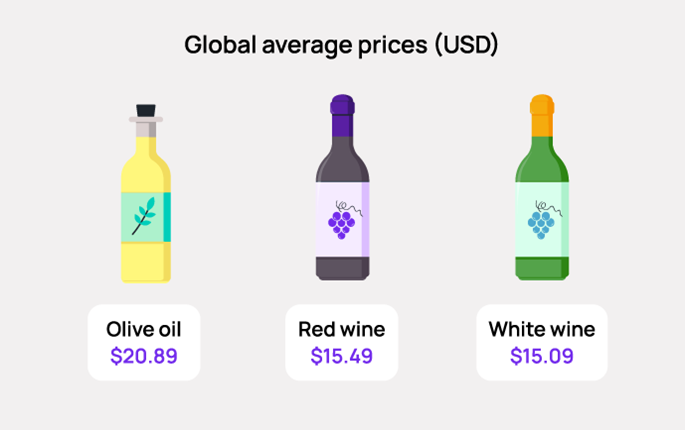
Source: ECA March 2025 Cost of Living Survey
Even reaching a destination is proving more hazardous. Experts suggest climate change is a major driver of increased - and more severe - in-flight turbulence, with injuries from sudden jolts on the rise.
This is the new equation in global mobility: escalating temperatures and unpredictable weather are inflating location allowances and driving up cost of living indices. Sweltering heatwaves, failed harvests and sudden storms have become part of a more chaotic – and costly – reality. International assignments can now come with climate clauses and backup power requirements that would have seemed excessive just ten years ago.
Some expatriate comments from the recent Location Ratings Survey
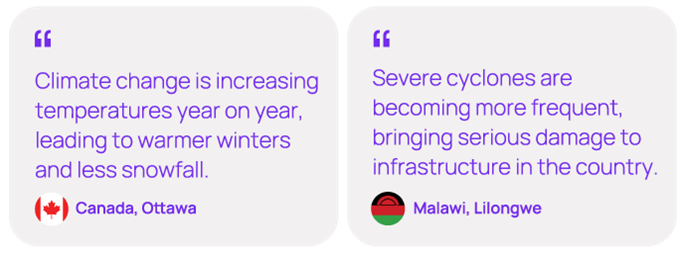

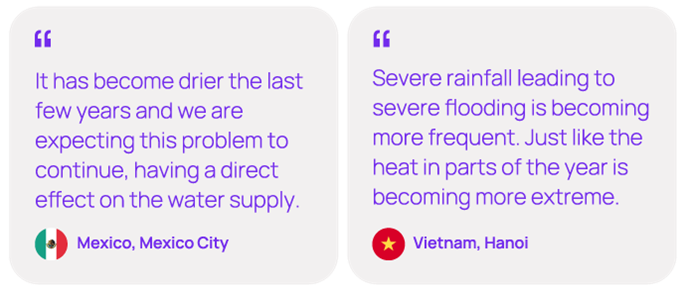
Degrees of hardship
Climate change is reshaping global risk assessment, as extreme weather events grow more frequent and destructive. ECA’s Location Ratings factor in recent natural disasters – many exacerbated by a warming climate – and in numerous cases scores have climbed, driving up location allowances.
Rising temperatures are making droughts longer and more severe. California’s multi-year dry spells and the Horn of Africa’s failed rains from 2020 to 2023 both point to disrupted rainfall patterns and accelerated evaporation. The same scorching conditions also fuel wildfires – from Canada’s record-breaking 2023 fire season to Australia’s deadly Black Summer. When it comes to flooding, the physics flip: a warmer atmosphere holds more moisture, only to unleash it in catastrophic downpours. Pakistan’s 2022 monsoon submerged a third of the country.
Meanwhile, warming oceans are feeding more powerful tropical storms, transforming them into destructive giants – like Cyclone Freddy, which spun for 35 days before slamming into Malawi. The impact is not just being felt in the developing world though. Hurricane Harvey stalled over Houston in 2017 and dumped the equivalent of a small lake on the metropolitan area. Houston was then battered again last year by Hurricane Beryl, which caused significant damage and again saw the city’s location ratings score rise.
The slow burn
Spectacular catastrophes will typically result in a jolt to a city’s location ratings, but sometimes a creeping accumulation of climate-related stresses has an equally significant impact. Indeed, on a Western European base, over a third of locations have seen an increase in their natural phenomena-related scores compared to 15 years ago. True, not every increase can be directly linked to climate change, but the numbers are hard to ignore - especially in Africa, which accounts for the largest share of these increases. That’s hardly surprising, considering the continent is widely regarded as the most vulnerable to the impacts of a shifting climate.
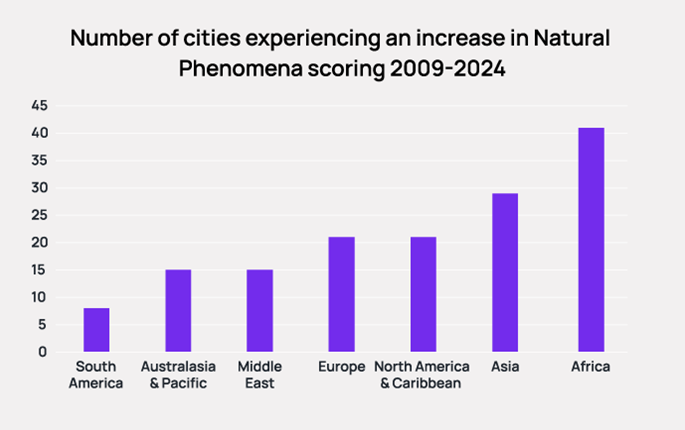
Source: ECA’s Location Ratings
One such city is Cape Town, where a three-year rain famine drew dam levels to emergency lows by 2018. ‘Day Zero,’ when taps would simply run dry, seemed imminent as the effects of the water shortage rippled through everyday life. Showers became ninety-second sprints and queues snaked from communal standpipes. Bottled drinking water vanished from store shelves. Hotels removed bath plugs and restaurants resorted to paper plates. Little wonder then that Cape Town’s utilities scoring climbed during the same period, with many expatriates seeing their location allowances rise in response.
Elsewhere, the cascading effects of climate change threaten to create vicious feedback loops. When drought hit Ecuador and Zambia in 2024, low dam levels triggered nationwide blackouts, only for the power cuts themselves to aggravate water shortages as pumps went offline. Unsurprisingly, Quito’s Location Ratings score spiked upwards as assignees dealt with deteriorating standards of utilities (on top of a worsening security situation).
Temperatures are rising – so are prices
Climate change isn’t just having a physical impact on expatriates – there’s a financial one as well. Perhaps you’ve noticed it too, at your favourite café, or scanning the shelves of your local supermarket. The increased occurrence of extreme weather events such as droughts, floods and storms is now hitting people in the pocket, with items thought of as everyday commodities, such as takeaway coffee, orange juice or olive oil, rising in price.
Many of us can’t imagine starting our day without a morning brew. Yet despite their apparent ubiquity, coffee beans are a particularly finicky crop to harvest, requiring cool temperatures and just the right amount of rainfall. Brazil and Vietnam, which combined account for over half of the coffee production in the world, have been particularly susceptible to extreme weather-related events in recent years. In both countries, storms, floods and droughts are ravaging crops.
Another everyday luxury that has been affected is chocolate. Reductions in the quality and quantity of cocoa harvests have been attributed to heat, disease and unusual rainfall patterns in West Africa, where countries like Ghana and the Cote d’Ivoire are among the world’s biggest producers of cocoa. Lindt & Sprüngli, for example, are raising prices to offset the impact of cocoa costs. Indeed, prices for beloved brands like Lindt Excellence have increased as much as 30% in the six-month period up to ECA’s March 2025 Cost of Living survey, across some European countries. Poor harvests have also led chocolate manufacturers to compromise on quality by reducing the cocoa content in their products, or even seek out replacements for cocoa altogether. Processed sunflower seeds, carob and fava beans have all been trialled as alternatives.
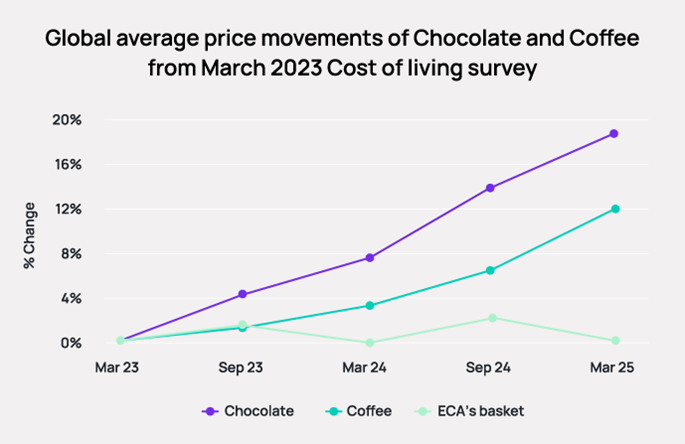
Even with compromises in the quality and pricing of coffee and chocolate, the future of these industries, among other everyday goods, remains uncertain. Whether it means we’ll have to make do with sunflower seed-based chocolate, or caffeine addicts will have to ration themselves, it’s clear that climate change is rapidly reshaping what we consume and how much we pay for it.
Case study: 2022 Pakistan floods
The ability to contend with the effects of changes in climate is sadly uneven, with some countries less well-placed to deal with climate carnage than others. Take Pakistan. In recent years, monsoon-season rainfall has been far above average, leading to devastating flooding. Record-breaking floods in the summer of 2022 submerged around a third of the country, resulting in the deaths of over 1,700 people, and caused around USD 40bn worth of damage.
Food insecurity was exacerbated, as floods destroyed millions of acres of crops, including a large proportion of key crops such as sugarcane, cotton, rice and grains. Rice is a key export, and Pakistan is among the top five rice producing countries in the world. It has been estimated that around 15% of rice crops nationwide were destroyed in the floods. Not only did prices increase locally (33% from September 2022 to March 2023), they increased on average by 6% in the same period globally. In particular, the cost of long grain rice increased in top rice importing countries such as China, Saudi Arabia and the Philippines, impacting indices for the many expatriates who are either based in these countries, or who call them home.
Global heating continues to impact monsoon season in Pakistan, with this year’s floods causing over 200 deaths at the latest count and worsening an already volatile crop harvest. This has included not just rice, but cotton, maize and wheat too. The impact of the floods and future extreme weather events will not only be felt in Pakistan, already burdened by food insecurity and a fragile economy, but will continue to shape the global supply chain.
Reliable insights in a changing world
Climate change is clearly no longer a distant environmental issue - it’s a daily reality with direct consequences for international assignees and global mobility teams. Employers owe a duty of care to their staff and should factor climate resilience into assignment planning to ensure the wellbeing of their assignees. They should also ensure that assignees are appropriately compensated for rising costs and threats to health and safety. In this changing environment one thing remains constant – you can rely on ECA’s cost of living indices and location ratings to accurately capture the impact of extreme weather events and long-term climate shifts.
Don’t get caught in the storm - stay ahead of climate cost
Extreme weather and shifting costs aren’t going away, but with ECA’s trusted Cost of Living indices and Location Ratings, you’ll have the clarity and confidence to make the right decisions for your assignees, wherever they are.
Get in touch to find out more about how ECA’s data can help you stay ahead of climate-driven cost changes.